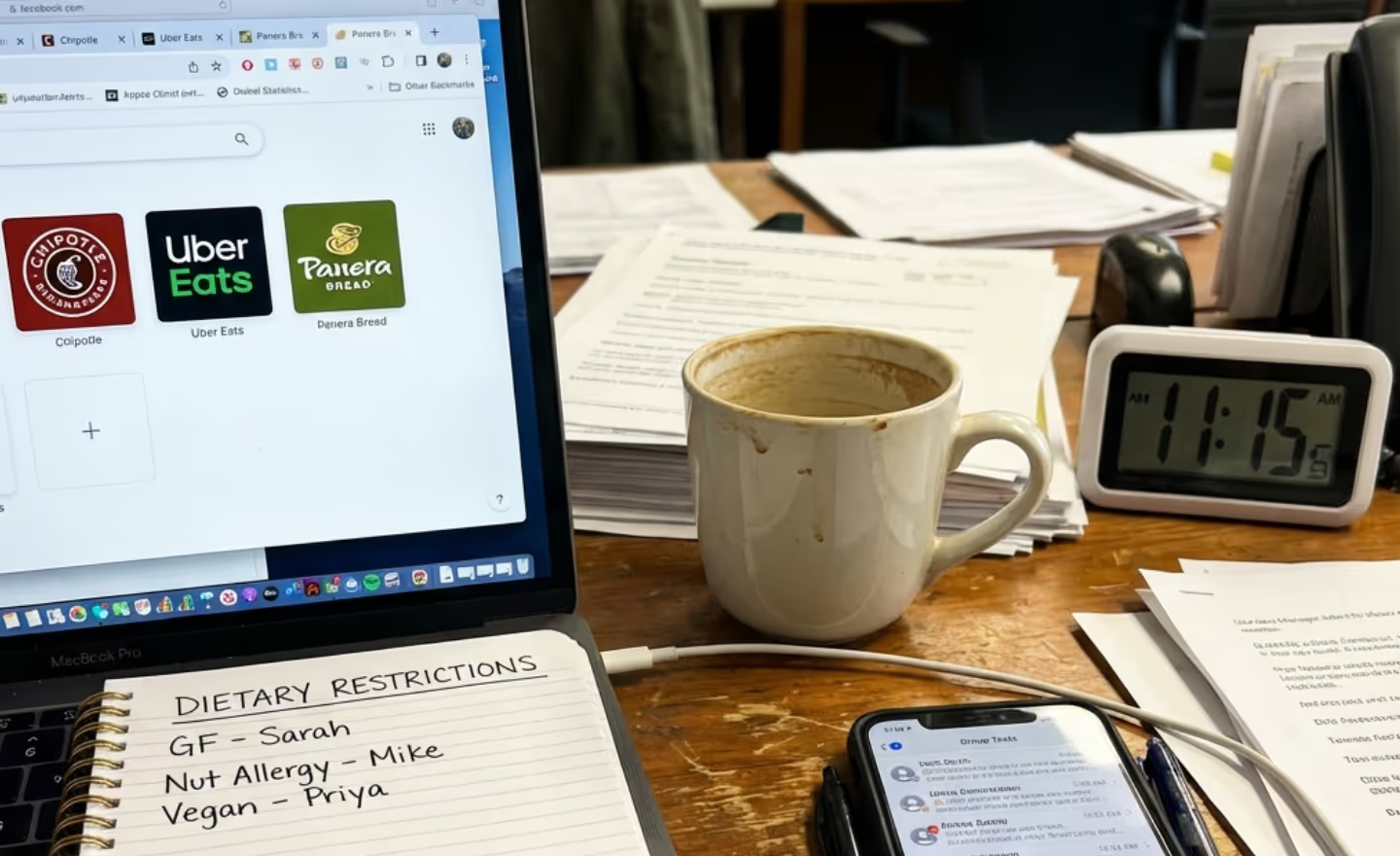Remote work and endless Zoom calls have left teams fractured, struggling to forge the trust and unity needed to thrive. The problem? Disconnection festers in today’s digital workplace, where meaningful interactions are sidelined by packed schedules and screens. Left unchecked, this isolation tanks morale, stifles collaboration, and kills innovation. Leaving companies with disjointed groups instead of dynamic teams.
The stakes are high: without strong bonds, your team’s potential crumbles. But there’s a fix rooted in human nature, it's shared meals. Far from just a lunch break, eating together rewires team dynamics, sparking trust, communication, and camaraderie. Science backs it up, and tools like Sharebite make it effortless to bring this age-old ritual into the modern (and potentially fully remote) office.
Here’s the solution: weave shared meals into your workplace strategy to ignite connection and boost productivity. Let's unpack the research proving food’s power and share actionable steps to launch your own team meals. You’ll discover how a simple meal can transform your team into a tight-knit, high-performing unit, ready to tackle anything.
The Benefits of Shared Meals: Backed by Research
Shared meals have long been a cornerstone of human connection, and science hints at the positive correlation on group dynamics. Here are two key benefits of eating together that directly translate to stronger teams:
Leads to Improved Communication
A study from Cornell University found that firemen who ate meals together performed better as a team, largely due to improved communication. The act of sharing a meal creates a relaxed environment where team members feel more comfortable engaging in open, informal conversations. These casual interactions often lead to better understanding, fewer misunderstandings, and a greater sense of psychological safety—key ingredients for effective collaboration.
Encourages Cross-Departmental Collaboration
Shared meals break down silos by bringing together employees from different departments or levels of the organization. A study by the Harvard Business Review found that employees who ate together were more likely to collaborate across teams, leading to increased creativity and better outcomes on complex projects. By fostering a sense of unity, group meals (or virtual group meals) help teams see themselves as part of a larger whole, rather than isolated units.
Practical Tips for Implementing Team Meals
Integrating shared meals into your workplace doesn’t have to be complicated. Here are some actionable tips to get started:
- Set a Regular Schedule. Consistency is key. We recommend starting with a shared weekly team lunch and gradually increase the frequency as it becomes part of your team’s routine. Regularity helps team members anticipate and look forward to these gatherings, making them a natural part of the work culture even if they are remote.
- Encourage Menu Rotation. To promote inclusivity and engagement, let your in-office and remote team members take turns choosing the menu. This not only ensures that everyone’s dietary preferences are considered but also gives each person a sense of ownership in the experience. At Sharebite, we make it easy to accommodate diverse dietary needs, from vegan and gluten-free options to cultural preferences through our in-office group ordering solution called Stations. With our other solution, Passport, you leave the ordering up to the employees and they can use their Passport card to pay for their meal at practically any cafe, restaurant or even food trucks.
- Use Meals for Non-Work Discussions. While it’s tempting to turn every gathering into a working lunch, resist the urge. Encourage team members to use meal times for casual, non-work-related conversations. This helps build personal connections, which are the foundation of strong professional relationships. Ask open-ended questions like, “What’s something you’re excited about right now?” to spark meaningful dialogue. You should even set up recurring Zoom meetings (or Google Hangouts, FaceTime or even Slack), so remote workers have a virtual lunch table to gather around and converse.
How Sharebite Makes Group Meals Easy
Organizing group meals can seem daunting, especially for companies with diverse teams or remote workers. That’s where platforms like Sharebite come in. Sharebite simplifies the process by offering:
- Easy Ordering: With Stations you can easily feed your in-office teams, while giving them the power to customize their orders and get it delivered directly to the office. With Passport, employees can use it like a credit card at practically any food merchant, including meal delivery apps so you can easily offer meal benefits to all employees regardless of their physical location.
- Dietary Accommodations: Sharebite’s platform allows for easy customization, so team members with specific dietary needs. Whether it's vegan, gluten-free, or allergen-sensitivities. They can all fully participate and enjoy their meals.
- Integration with Workplace Tools: Sharebite integrates with existing workplace systems, making it easy to schedule and manage group meals without added administrative burden.
By streamlining meal allowance benefits, Sharebite allows companies to focus on what matters most: building connections and fostering a positive workplace culture.
Overcoming Common Objections
Some leaders may worry that organizing group meals is time-consuming or expensive. However, the benefits far outweigh the costs. Shared meals don’t have to be elaborate. Even simple, low-cost gatherings can be very effective. Plus with platforms like Sharebite, the ordering process is efficient and hassle-free.
Invest in Your Team’s Future
In a world where digital communication often replaces face-to-face interaction, shared meals offer a powerful way to reconnect teams and foster a sense of community. By prioritizing these experiences, companies can create a workplace culture that values connection, trust, and collaboration.
Investing in shared meal experiences is an investment in your team’s future. The bonds formed over a shared table can lead to breakthroughs in the boardroom, making your team not just more productive, but more resilient and united. So, why wait? Gather your team, share a meal, and see the difference it makes. Ready to see how Sharebite can overhaul your workplace meal experiences?






